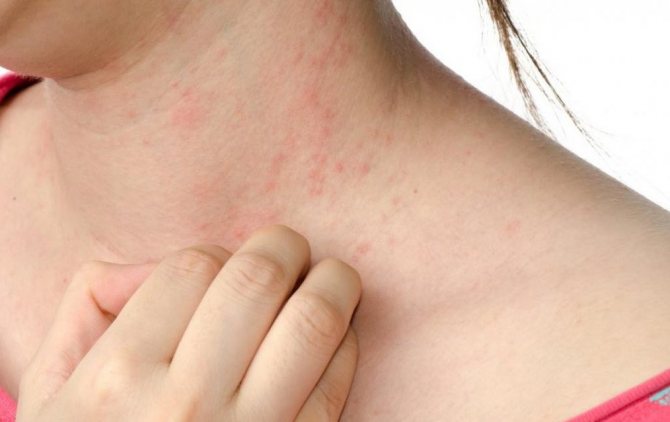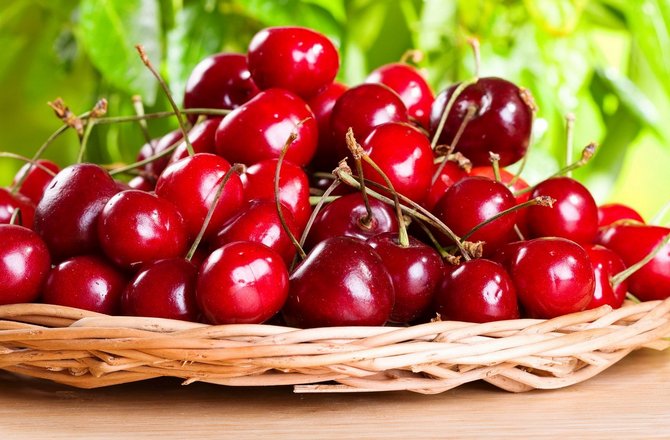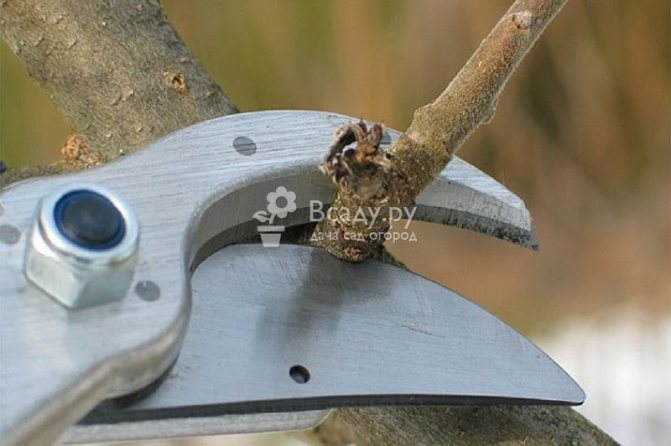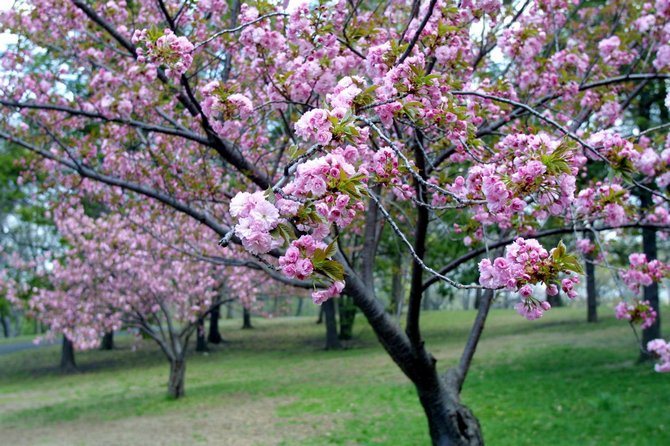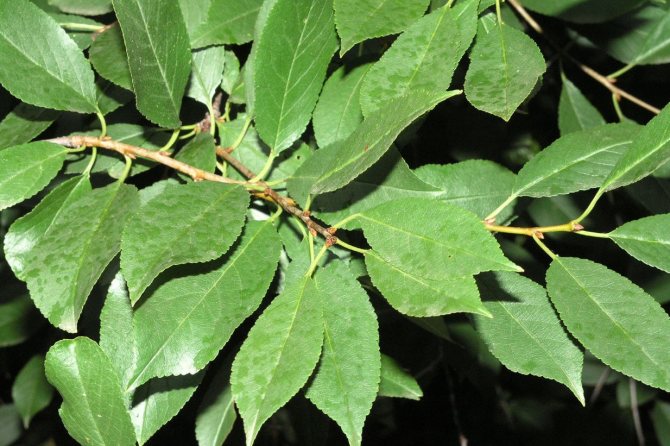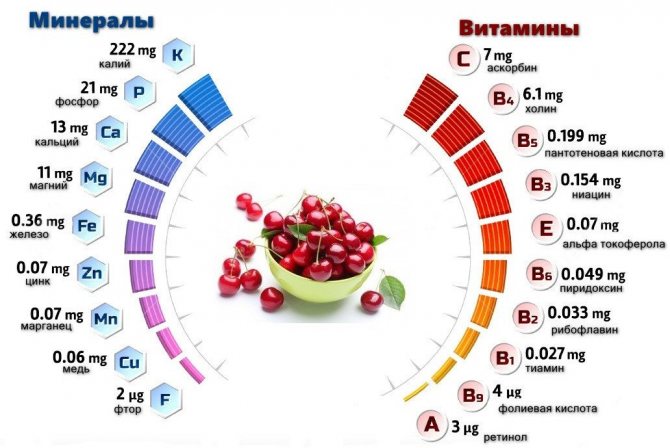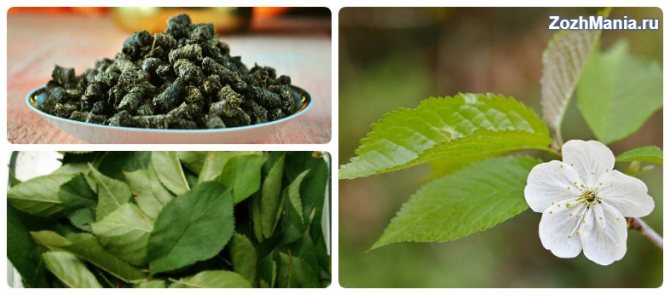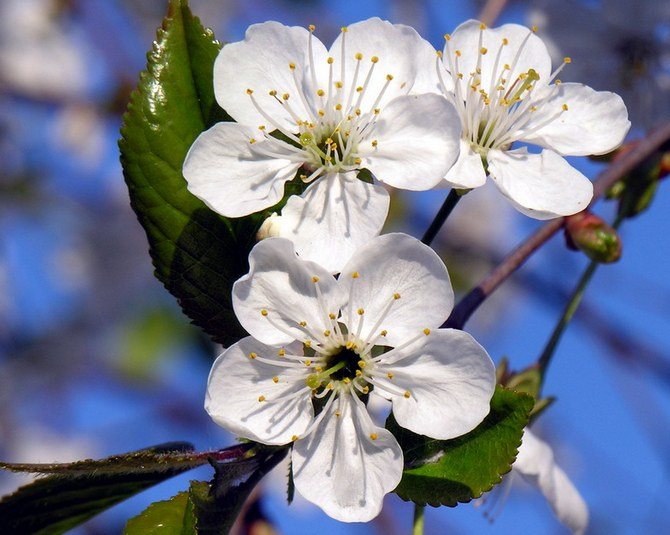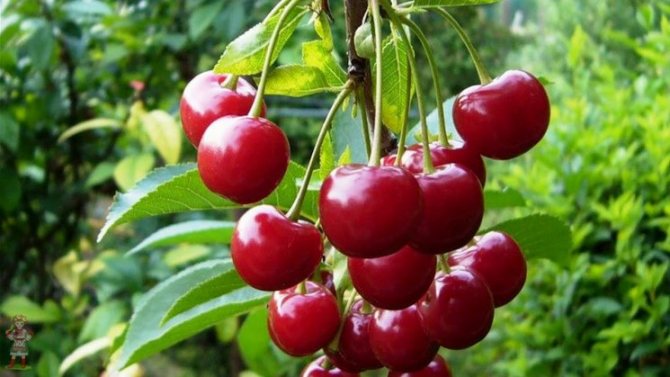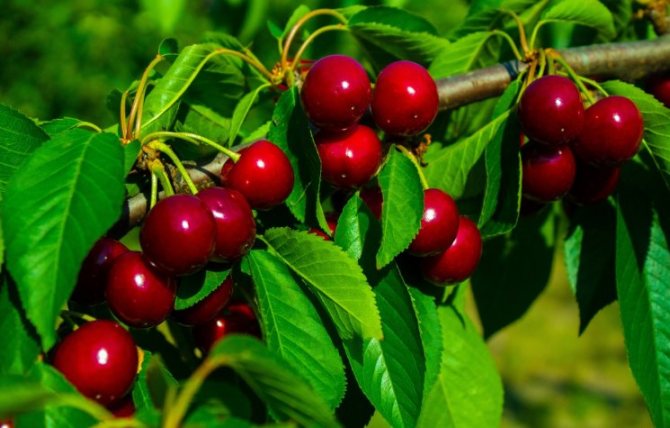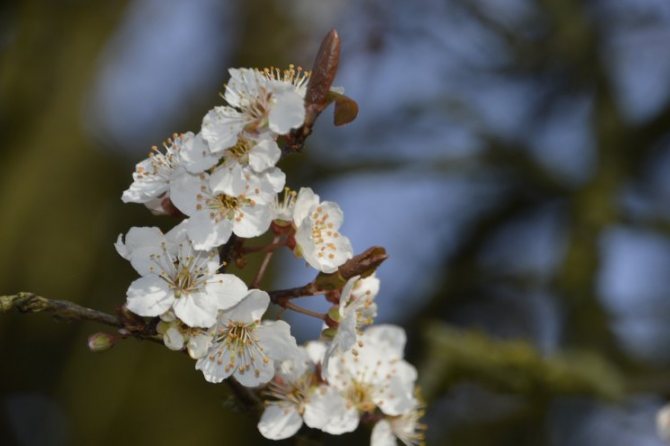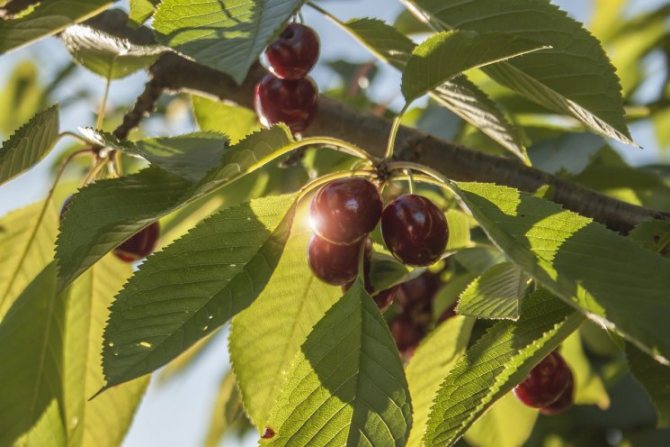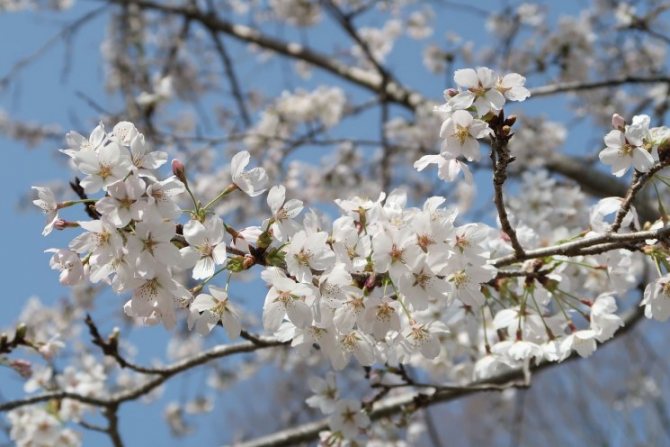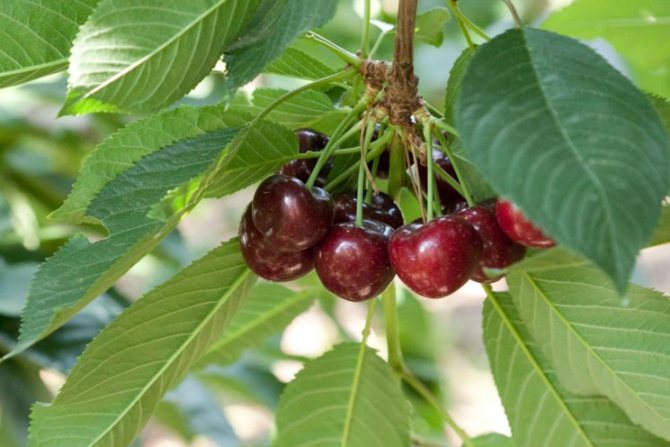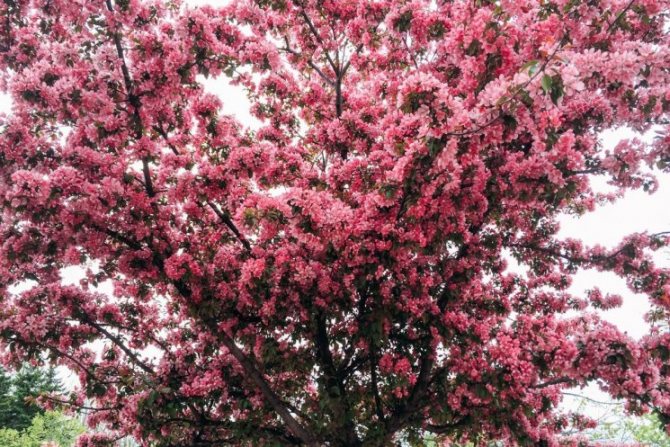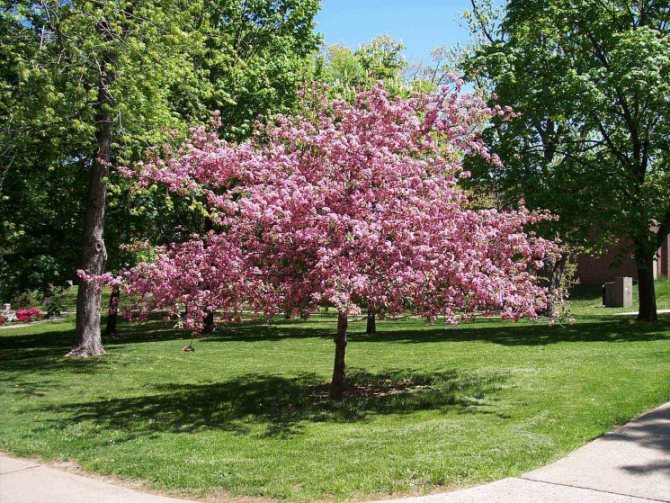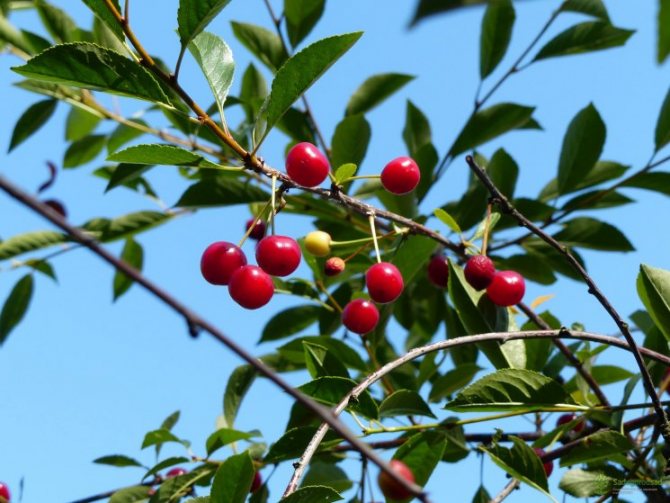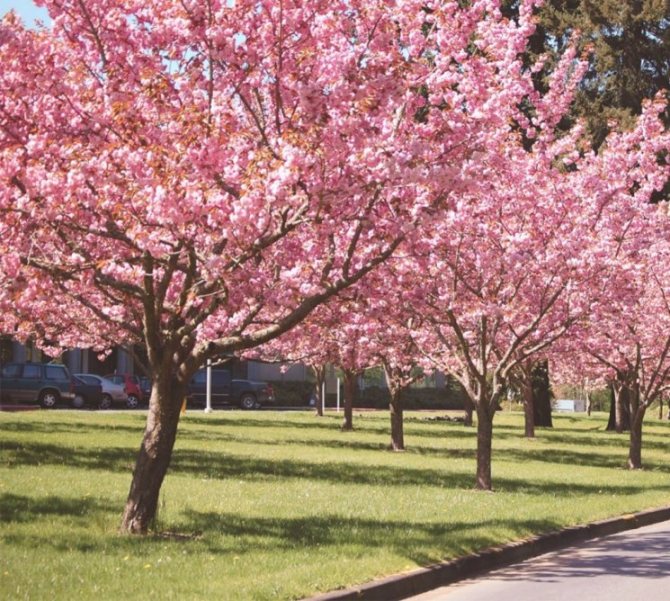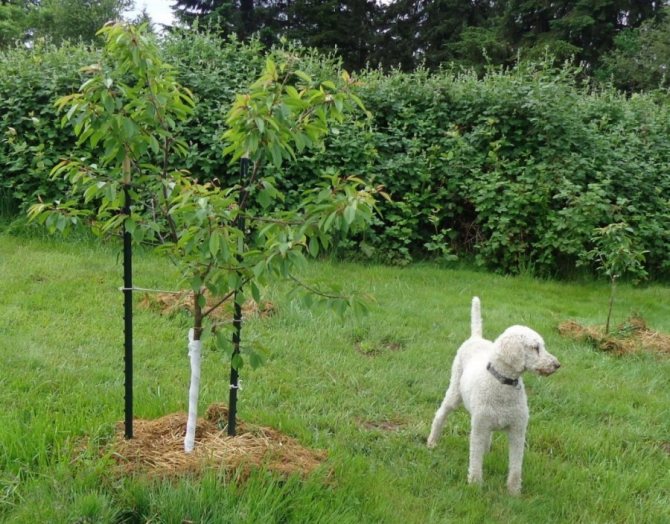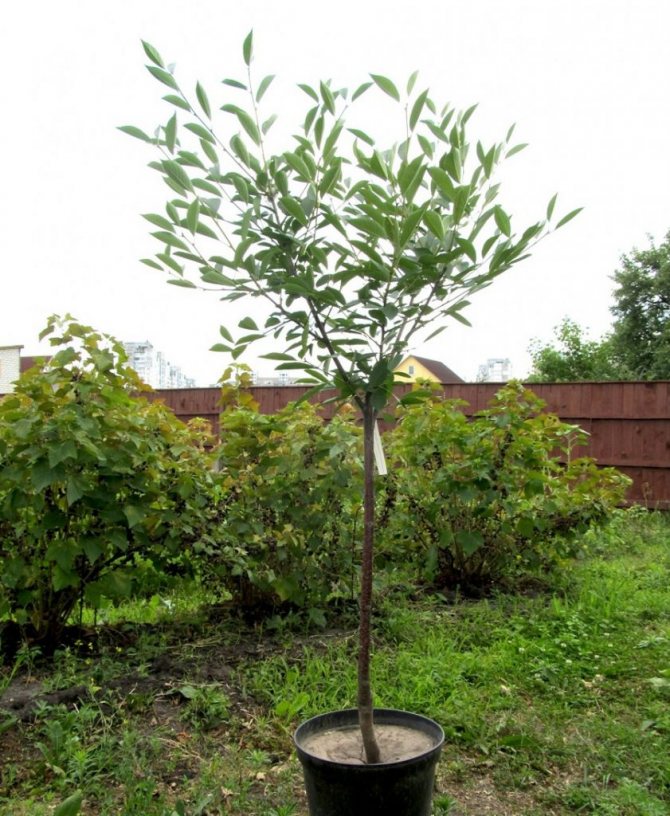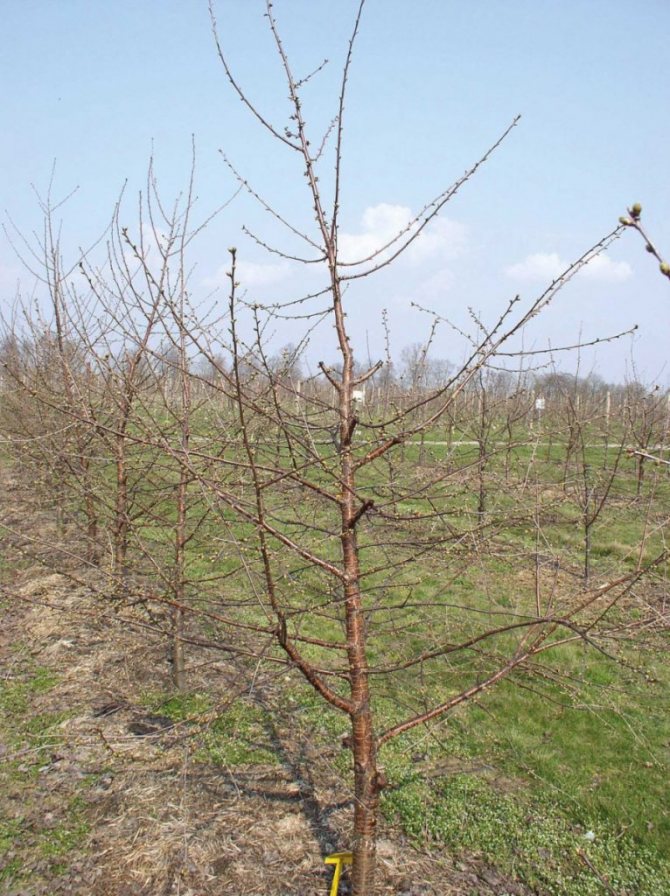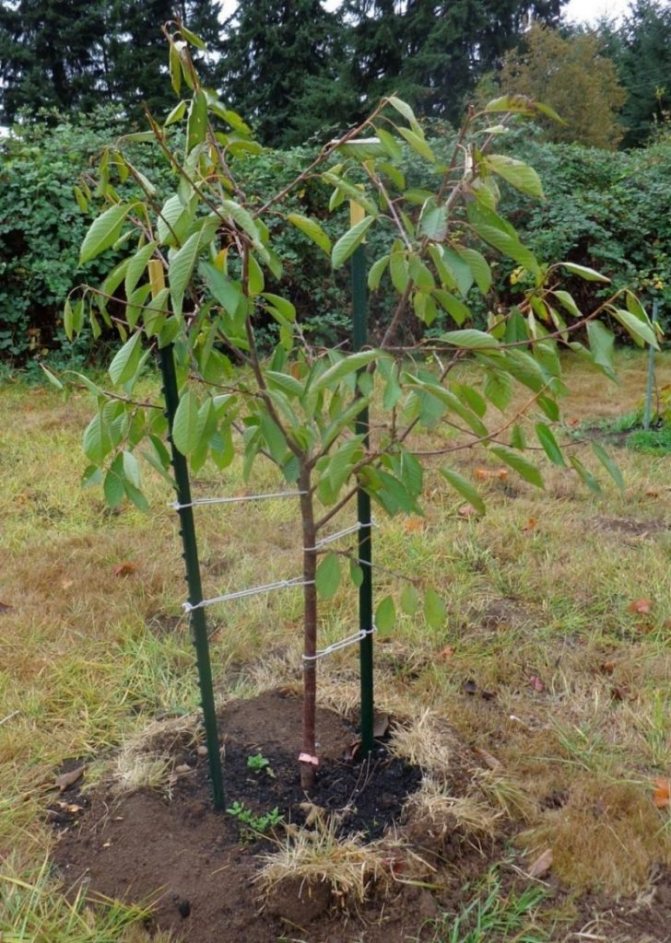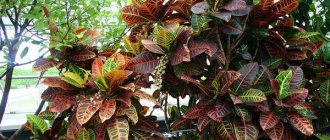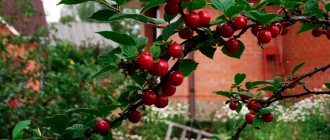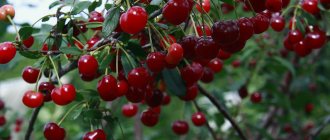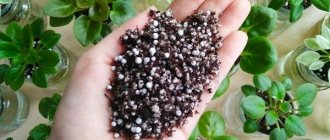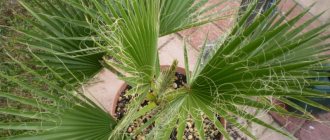
Cherry is a fruit tree, the leaves and fruits of which have unique healing properties. The homeland of the plant is the Mediterranean. For the first time, cherries began to be grown as a garden tree in ancient Rome, after which the taste and beneficial properties of berries and leaves began to be used in folk medicine and cooking by residents of all European countries. The cherry tree is grown not only for its medicinal qualities, flowering gardens and branches covered with red berries look very attractive.
Cherry leaves: chemical composition
Cherry leaves contain the following substances:
- Coumarin. Takes part in the processes of blood clotting, prevents the formation of blood clots.
- Essential oils. They have antiseptic and anti-inflammatory properties, provide a light scent of leaves.
- Tannins. They have the same properties as essential oils.
- Quercetin. Protects the body from harmful effects, it is a natural antioxidant, it weakens the action of free radicals on the central nervous system. It has a beneficial effect on the work of the heart.
- Amygdalin. Normalizes heart rate, reduces the intensity of heart attacks.
- Vitamins of group B, vitamins C, P, A. They have a tonic and sedative effect, contribute to the normalization of metabolism.
- Phytoncides. Stops and destroys the growth of fungi, pathogenic viruses and bacteria.
- Trace elements: magnesium, potassium, manganese, molybdenum, iodine, phosphorus, cobalt, copper, calcium.
Contraindications to the use of cherry broth
- Gastritis and peptic ulcer disease in acute form, leaves can provoke irritation of the gastric mucosa.
- In case of unstable work of the intestines or stomach, it is not recommended to often consume cherry leaves, in this case the risk of constipation increases significantly.
- Leaves lower blood pressure, so do not consume them during an attack of hypotension.
- Individual intolerance.
No other contraindications were identified.
Cherry leaves are a piquant highlight of many culinary dishes. They are added to jams and preserves.
Application of cherry leaves
The healing properties of cherry leaves make it possible to widely use them for the treatment of the following diseases:
Urolithiasis. The diuretic effect of the broth helps to remove sand, cope with inflammation.
You may be interested in: Hibiscus tea: useful properties and rules of use
Varicose veins, thrombophlebitis. The broth reduces the risk of tissue ischemia, blood clots in blood vessels.
Decreased immunity. It is recommended to use the decoction for frequent colds, chronic tonsillitis, bronchitis, sinusitis. It is effective for general health promotion, recovery after a serious illness.
Cuts, abrasions and wounds. To accelerate healing, prevent the development of a purulent infection, compresses and lotions with a decoction of cherry leaves are used.
Bleeding of any kind. Cherry leaves have hemostatic properties. They improve blood circulation, are effective for anemia, frequent nosebleeds.
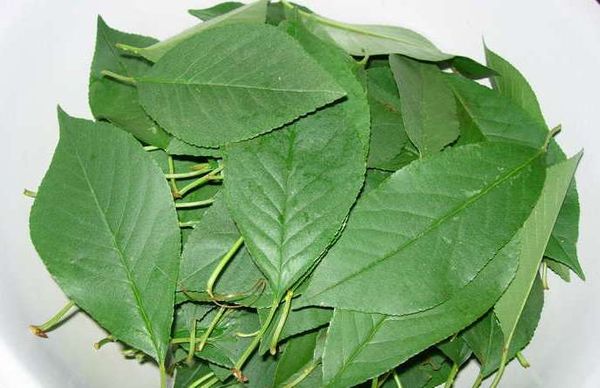

The health benefits of cherry leaves
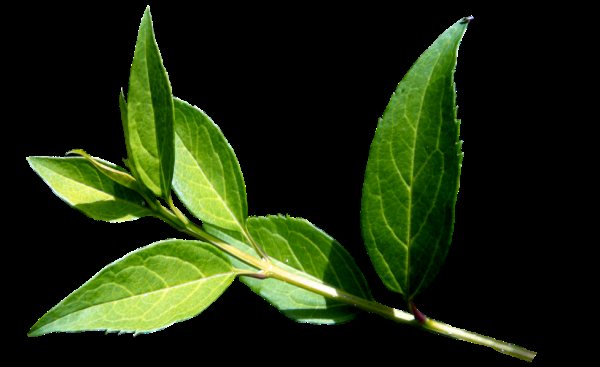

Herbalists have used cherry leaves for many decades to treat and prevent many diseases.Their benefits are due to their rich chemical composition and the presence of a large amount of nutrients:
- pectins;
- vitamins - A, B and C;
- minerals - calcium, sodium, phosphorus, potassium, iodine, copper.
When eating cherry berries, it is important to take into account all contraindications, in particular, fruits should not be eaten with high acidity. The leaves can be used in cooking and traditional medicine without restriction.
Wild cherry leaves contain the maximum amount of ascorbic acid. A drink made from ten leaves will replace one aspirin tablet. At the same time, the drug has contraindications for use, and the natural source of vitamin C is completely safe for humans.
Note: during pregnancy, contraindications apply to some foods, cherry leaves are an exception. In addition, they contain folic acid, which is necessary for the development of the baby.
Healing drink recipes
Drinking tea from cherry leaves, the benefits and harms of which are still being studied, is justified for many diseases. For treatment, infusions and decoctions are prepared. Of course, they need to be properly prepared and consumed.
Decoction for the treatment of hepatitis
Traditional healers suggest preparing a decoction of the leaves in milk. It will take 4 tbsp. tablespoons of chopped fresh leaves, 1 glass of hot milk. The mixture is boiled over low heat for ten minutes. After that, remove from heat, cover with a lid, leave to infuse warm until it cools completely. The broth is filtered. The course of treatment is 7 days, during which the broth is taken in 50-60 ml five to six times in 24 hours. With hepatitis, a decoction of dry leaves of a cherry tree is also useful. It is prepared from 1 cup boiling water and 2 tbsp. spoons of leaves. The patient should take it for two weeks, 70 ml in four hours.
Decoction for anemia
The broth is prepared from young leaves and cherry shoots. You can use fresh shoots that are cut in the spring. You can dry them and use them in the winter. Pour a handful of twigs with 2 cups of boiling water, keep on fire in a light boil for 5 minutes. Then leave for 20 minutes, drink a glass of drink every day.
You may be interested in: Laxative tea for cleansing and weight loss
Shrub cherry varieties and their characteristics
Steppe cherry is one of the most frost-resistant species, which is able to withstand air temperatures down to -45 ° C. Therefore, it can be planted in different climatic zones, for example, in regions with severe winters - in the Urals or Siberia, where ordinary varieties cannot grow and bear fruit.
Breeders have developed many varieties of bush cherry and its hybrids with ordinary cherry. The most popular are: Altai large, Zhukovskaya, Schedra, Maksimovskaya, Metelitsa, Vuzovskaya, Shokoladnitsa.
Zhukovskaya


Shrub cherry varieties Zhukovskaya
Differs in high quality berries, resistance to diseases (coccomycosis, ring spot). Has the ability to self-pollinate. The fruits are of universal purpose, rather large (4-7 g), dark red in color with a pleasant sweet and sour aftertaste.
The bush begins to bear fruit 4 years after planting. The peak yield falls on 15-20 years (up to 25 kg of berries from one crop). Suitable for growing in the north and south of the country, as it is characterized by an average winter hardiness.
Generous
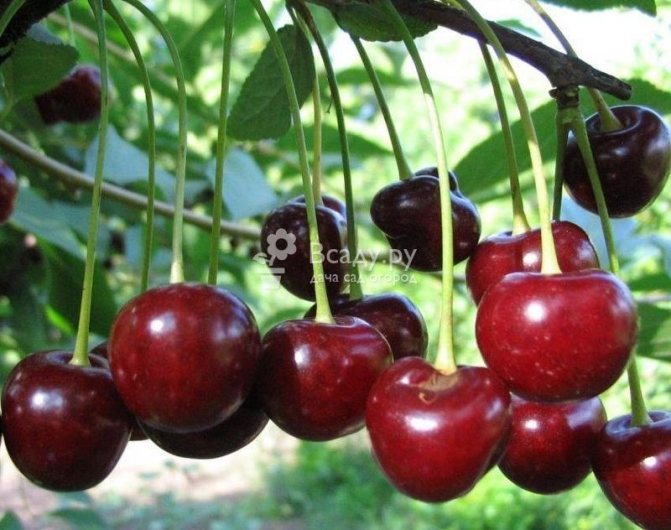

Shrub cherry varieties generous
Refers to varieties of late ripening. Fruiting begins in the third year after planting. Productivity is high: 13-17 kg of berries are harvested from one tree. Fruits are round, crimson, weighing 4-5 grams. The pulp is quite dense and juicy, sweet in taste with a barely noticeable acidity. Bush cherry Generous tolerates low temperatures well, but its resistance to diseases is average. Prefers to grow on slightly acidic loamy soil.
Preparation of infusion from cherry leaves
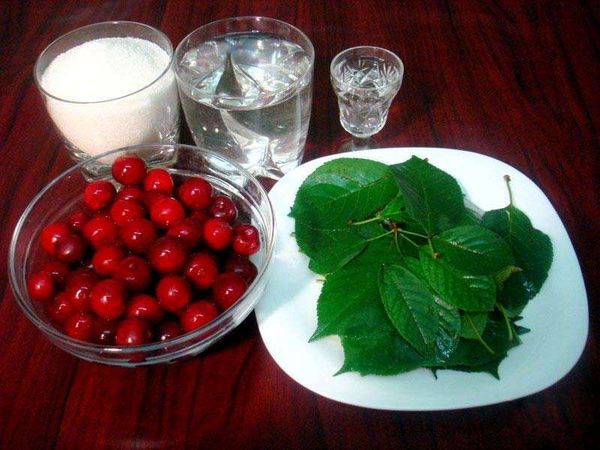

Infusion for the treatment of urolithiasis
To prepare this infusion, you need to take dry leaves of a cherry tree. 2 tbsp. put tablespoons of dry raw materials in 200-250 ml of boiling water. Keep on low heat for 10 minutes. Remove from heat, leave under the lid for a couple of hours. The treatment is long, about a month, the infusion is drunk in 100 ml every 3 hours.
Infusion for the treatment of hypertension
Take 4 tbsp. tablespoons of dry leaves for 2 cups of boiling water, place in a thermos, leave for several hours. Long-term intake of such tea will help to cope with hypertension, edema, improve the condition in case of problems with blood vessels, heart.
How to prepare raw materials for brewing yourself


The most useful and tasty are young cherry leaves, collected in the second half of May, when the trees turn green, but there are no inflorescences on the branches yet. At this time, the maximum amount of nutrients is concentrated in the shoots and leaves, which are very delicate in taste. It is necessary to dry raw materials at natural temperature.
Note: after drying in natural conditions, the leaves retain their rich composition and beneficial properties.
Immunity boosting tea
In the off-season, with poor health, after a long illness, it is useful to consume tea, which is prepared from 2 tbsp. tablespoons of dry leaves, a teaspoon of tea leaves, 1 tbsp. tablespoons of sugar. Pour 500 ml of boiling water into the mixture, leave for 20 minutes. You need to drink tea for two weeks, 2 cups a day (no more).
If the cold has already overtaken, it is worth brewing tea from leaves and berries. For 1 glass of the drink, you need to take 5 dry berries and 5 dry leaves. Insist, add a spoonful of honey before use to improve the taste.
Brief description of the plant
- Appearance: deciduous tree or shrub from 1.5 to 5 meters tall, sheds foliage in the autumn-winter period.
- Fruit: sweet and sour juicy drupe of red, dark red or black color, containing one stone.
- Origin: a subgenus of plants of the Plum genus, the Pink family.
- Life span: twenty five to thirty years.
- Frost resistance: high.
- Watering: moderate, drought-resistant plant.
- Soil: neutral, well fertilized.
- Attitude to light: light-loving plant.
How to prepare
In order to get the maximum positive effect, you need to know when to harvest and how to dry the cherry leaves. Traditional healers recommend adhering to the following rules:
- Only the youngest and still sticky leaves are suitable for the blank. Only they contain many useful substances, have a strong aroma and have healing properties. Basically, it is recommended to collect raw materials in mid-April or early May.
- You need to pick the leaves in clear sunny weather after the dew has already melted. Otherwise, the prepared raw materials can quickly deteriorate.
- During collection, do not wrinkle the torn leaves, do not ram them and try to damage them as little as possible.
- Do not collect greenery on trees growing along the road or next to industrial enterprises. In such leaves, many harmful substances accumulate that are dangerous to human health.
- Dry the leaves immediately after collecting them from the tree. To obtain good raw materials, it is laid out in a thin layer in a well-ventilated and warm room, but without sunlight.
- Dry leaves should not have dark spots, mold and rot. And when bent, good raw materials break easily.
- The dried leaves, ready to use, can be stored in paper or cloth bags for no more than 2 years.
For your information. Don't pick many leaves from one cherry. Because of this, the tree can get sick and die, significantly reduce its yield.
Cherry leaves are easy to reach as the tree grows almost everywhere in mid-latitudes.It can often be found in forests, in the courtyards of high-rise buildings and in the private sector of cities. But the greatest health benefits come from wild greens, not varietal plants. Therefore, try to collect leaves for the preparation of decoctions, teas, tinctures and other means from such trees.
Correct planting - rich harvest
Cherries are grown almost everywhere. Different types of cherries reproduce in the same way - by seedlings. It is better to plant cherries in spring in warm soil, so that before the arrival of frost, it can take root well and start growing.
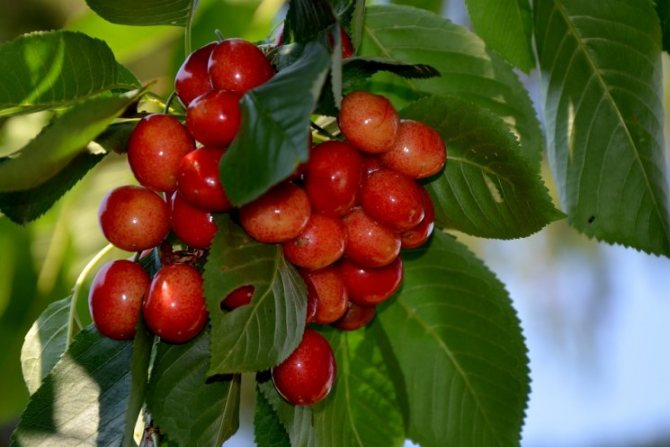

It is important that by this time the buds on the seedlings do not have time to bloom. If you plant cherries in the fall, then they may not have time to take root and will die from frost.
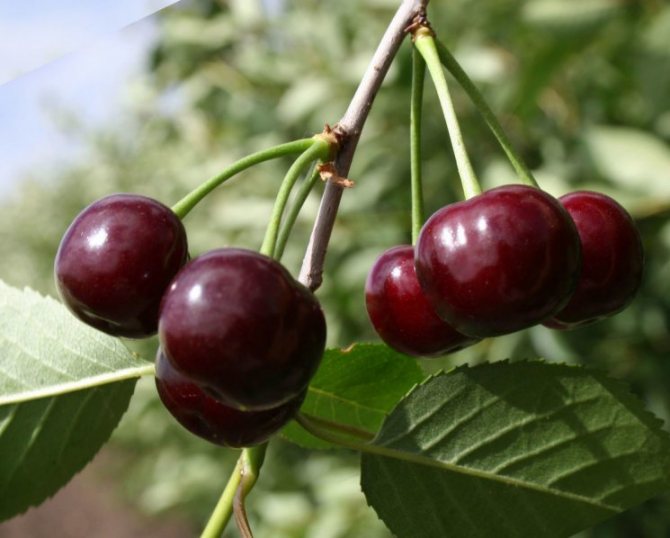

Cherry does not need feeding for the first 3 years, but it should be watered abundantly during flowering and ripening of berries.
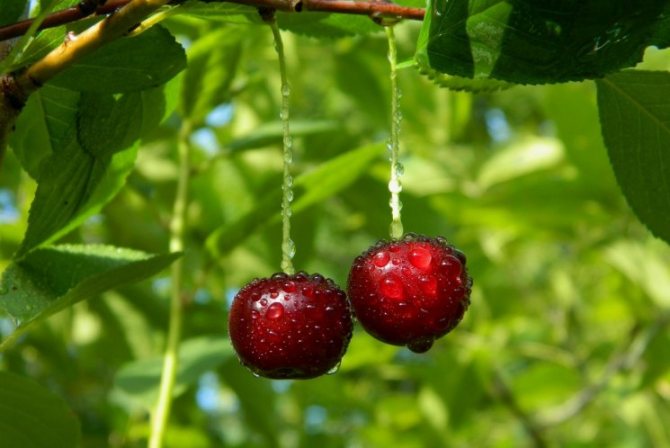

To obtain a good harvest, the plant is treated with a solution consisting of a liter of water and 1 tablespoon of honey to bait insects, which will contribute to its pollination.


Pruning is carried out in the spring before the buds begin to open, removing too long shoots that grow inward and thicken the crown. Also, in the spring, all young growth is removed, and the trunk circle is fertilized with a mixture of manure and sawdust.
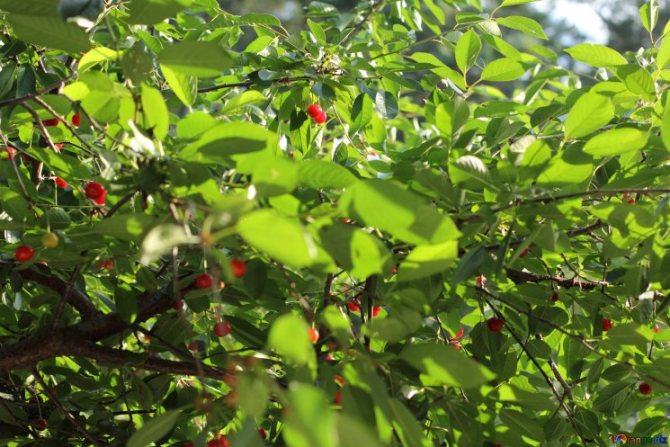

In the spring, it is imperative to spray the tree to prevent diseases and pests. Insects like cherry elephant, cherry moth, cherry leaf roll like to settle on cherries.
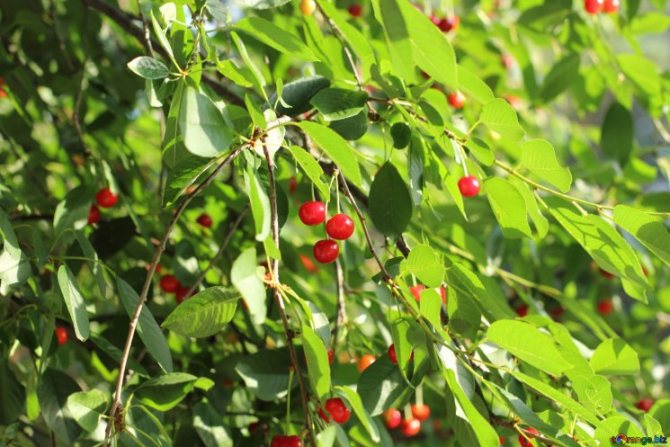

You can fight them with folk remedies using tinctures from potato or tomato tops. You can also use chemicals.
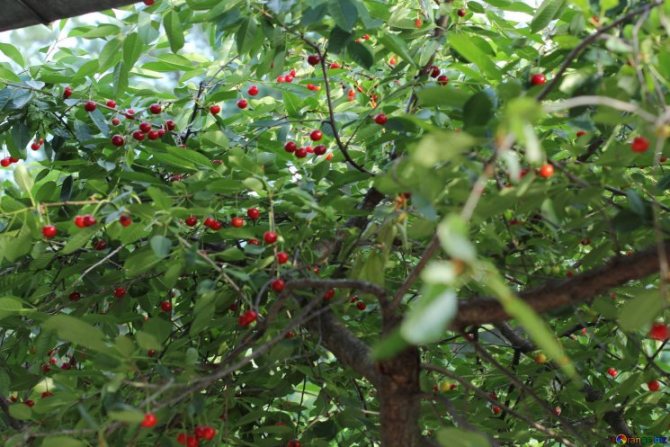

Diseases and pests
Among cherry diseases, fungal diseases are common, which can destroy the cherry tree in a short time. These include the following pathologies:
- stem rot;
- monilial burn;
- chlorosis;
- cocomycosis;
- clasterosporium disease.
To combat these diseases, as well as to prevent them, it is necessary to regularly spray the cherries with preparations containing copper. These include Bordeaux liquid and HOM and Abiga-Peak preparations. Insecticides should be used to control pests.
Photo gallery
Health benefits of the body
Cherries contain a lot of useful components. There are many bactericidal substances in the pulp of the berries. A special coloring pigment, anthocyanin, allows filling the pulp of the fruit evenly, which makes the cherry very well absorbed.
The fruit contains coumarin, which helps to reduce blood clotting. This property makes it possible to use cherries for the prevention of some complications of a disease such as arterial atherosclerosis.
Berries also contain a lot of B vitamins, vitamin C, pigments and trace elements such as iron, magnesium, cobalt, which is why it is used for the treatment and prevention of anemia.
Cherries help to remove nitrogenous toxins from the body. Its juice not only quenches thirst and normalizes appetite, but is also used as an expectorant and mild laxative, treats arthritis and helps in the treatment of mental illness.
In the course of recent studies, the presence of ellagic acid in cherries was found, which can block the growth of cancer cells, prevent the growth of tumors.
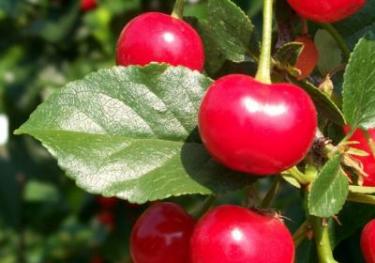

Berries also contain anthocyanidins, which can reduce the amount of uric acid in the body. Regular use of cherries is indicated for the prevention of gout, as it greatly reduces the risk of occurrence and development of this disease.
Experts often call cherries a heart berry, because it has a very good effect on the heart and blood vessels.The combination of pigments, ascorbic acid and P-vitamin-active tannins in fruits allows you to strengthen blood capillaries, increase the tone of the latter and normalize blood pressure.
A similar combination increases the body's resistance to unfavorable environmental factors, in particular, a high level of radiation.
Health professionals confirm that people who are prone to heart disease can seriously reduce the frequency and severity of heart attacks by regularly including cherries in their diets.
Certain benefits lie in cherry leaves. Those that have fallen off after flowering are useful, especially when fresh. You can also prepare them in advance by drying them under a canopy. Useful vitamin tea is made from the leaves, which has anti-inflammatory and hemostatic properties.
Leaves boiled in boiling water are useful for bleeding and high blood pressure. This infusion helps to cope with nosebleeds and too heavy menstruation. The combination of cherry leaves and milk relieves liver diseases, including hepatitis, and cholelithiasis.
Features of the view
This unique species is a complex name for all varieties of East Asian ornamental varieties.
The most valuable in private gardening and landscape design are Japanese and Chinese varieties. They are hybrid forms in the form of massive shrubs, semi-shrubs or trees with lush and aromatic flowering. The flowers are large, double, pink, snow-white or dark pink in color. The plant blooms in early spring.
Each inflorescence contains 7-8 flower buds. The foliage is large, emerald green.
Most Japanese varieties of Ornamental cherry have a compact crown and are not very vigorous. Only a few hybrid forms reach 20 m in height.
The main characteristics of the species include:
- funnel-shaped crown, weeping;
- branches are fragile, hanging;
- with the arrival of autumn, the leaves take on a yellow, purple or orange hue;
- flowering is long - from early March to late July, in some species it occurs in November.
Cherry fruit


Cherry fruit - sweet and sour berry. It is eaten fresh and processed. Berries can be frozen and dried. Dark burgundy fruits are dried, after removing the stalks. The berries are sorted out, washed and blanched in a boiling baking soda solution. Then washed in cold water. Drying is carried out at a temperature of 40-45 ° C, until the berries become shriveled. Then the temperature is raised to 80 ° C. The drying process takes up to 12 hours.
conclusions
- In horticulture, a whole range of cherry tree varieties stand out. The basic principles of classification are according to the type of tree, ripening time, growing regions, ornamental characteristics.
- Most cherry varieties bear fruit normally only if pollinators are present.
- For the Urals and Siberia, frost-resistant crops are needed.
- Ornamental cherries are widely used in landscape design and give good results.
Also read about the top 12 self-fertile cherry varieties for the Middle Lane.
Decorative
Cherries stand out in a separate category, which not only give tasty fruits, but also become the main decoration of the garden. The most popular variety is Ferruginous. The tree grows in North China, Japan, Korea, nature reserves. The ornamental shrub has a compact size and a rounded shape, comes with flexible shoots, graceful green foliage. The main advantage of the variety is a very beautiful flowering with densely doubled snow-white flowers.
The glandular cherry blossoms throughout May and becomes the main decoration of the garden. The Bessey cherry variety is also considered decorative.
Shoots are flexible, smooth, reddish-brown in color, rather thin. The leaves are oblong green.The culture develops best in well-lit areas. Watering she needs moderate, soils - neutral, sandy loam, loamy nutrient. The tree looks very beautiful together with conifers, it is used for landscaping not only private estates, but also the territories of cottage villages.
Sakura, or Japanese cherry
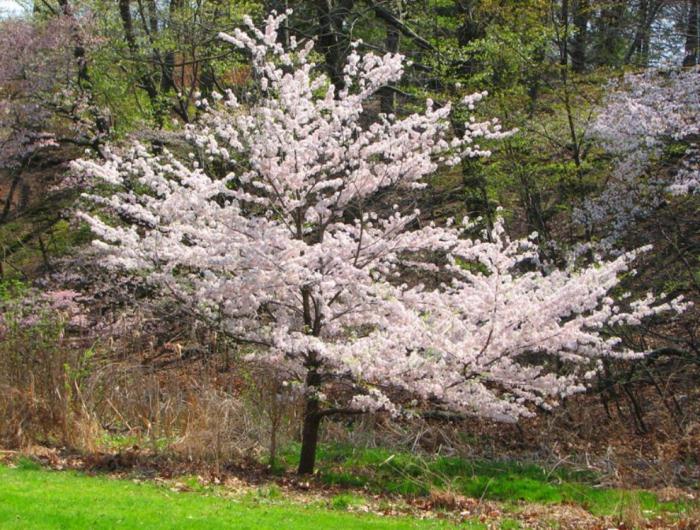

The Japanese cherry, or sakura, is more of an ornamental tree than a fruiting one. Its homeland is Japan, where various varieties of cherries grow in all regions. Every year, the locals celebrate the arrival of spring with the beginning of cherry blossoms. The tree grows in height up to 4 meters, its crown is spreading, umbrella-shaped, in width it can also reach 4 meters. The branches are long, flowing. The leaves are narrow, ovoid, pointed at the ends. In the summer they are painted bright green, and by autumn they acquire a yellow color. The flowers are small pink, each of them is located on a petiole. The flowering period is mid to late spring.
Description of ordinary cherries


Common cherry - the most common representative of its kind. Not found in the wild. It has been cultivated since ancient times.
According to its structure and characteristics, it is divided into 2 forms: bushy and tree-like. Bushy varieties are distinguished by a spherical crown, branches drooping down, abundant formation of shoots, dark, almost black fruits. Active fruiting lasts 10-18 years. The bushy form of cherry is characterized by a shallow bedding of the roots and their growth by 6-7 m in width. This form is more frost-resistant than tree-like.
The roots of tree varieties penetrate deeper into the soil, almost do not spread in width.
Cherry care
A cherry bush or tree requires proper attention in all aspects. For the first few years, it may not be fertilized, but it should be protected from climatic changes. When a small tree turns into a wide and noble tree, it must be properly taken care of: watering, fertilizing, pruning.
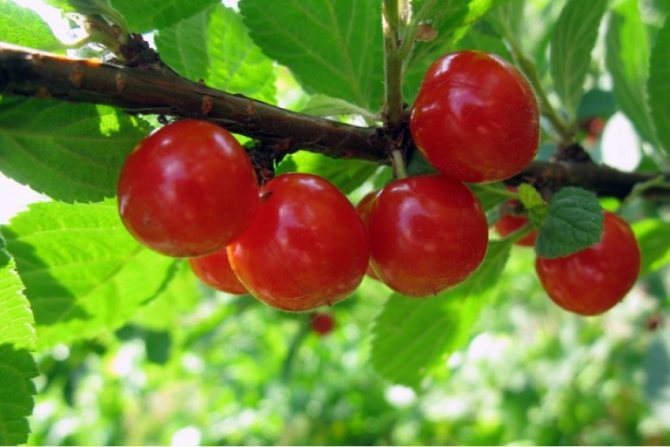

Unlike many plants, cherries need frequent watering. Until she brings a crop - 1 time in 2 weeks, in hot weather 1 time in 6 days. When ripe fruits begin to appear - once every 3 days, two buckets per object.
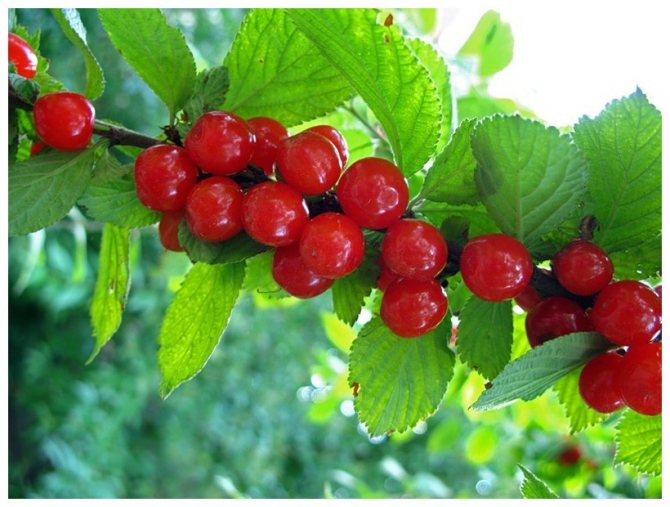

The stone fruit plant needs to be flavored and "fed", so rotting and the appearance of worms can be avoided. The optimal organic feed is a mixture of superphosvat and sulphate, which is injected directly into the ground.


In addition to constant action, it is important to treat the vegetation and carry out annual crown pruning. If the cherry variety is susceptible to fungus, then all organs of the plant should be treated with a urea solution. This mixture will "kill" all pests under the bark.


Appearance and description
The tree and berries have a rather simple and brief characteristic:
- A stone fruit tree with a remarkable amount of foliage, a strong trunk and small fruits. Each season sheds the ovaries and all the deciduous crown.
- The berry has a bright red color and 1 dark pit. Overripe cherries are colored maroon.
- The beginning of the family tree is considered to be Plum.
- Years of life from 25 to 35 years.
- Resistant to severe frosts and hot summers.
- Patient with drought, does not require frequent watering.
- Loving for sunlight.
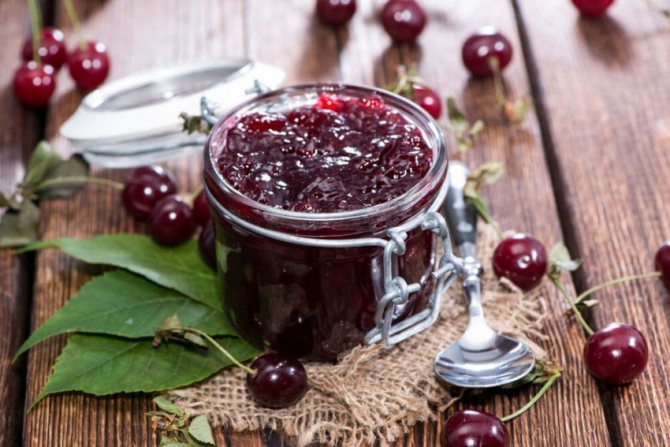

Planting material: preparation secrets
The most favorable time for planting cherries is autumn. This applies to harvesting shoots, rooting. With your own hand selection of planting material, you should separate several green shoots located on the southern part of the tree. Cuttings are cut from them, having from 4 leaves, about 12 cm long.


The harvested seedlings are placed in a container with soil at a distance of 6-7 cm from each other. Creating a "greenhouse effect" will significantly speed up the rooting process. For this, the box with the planted cuttings is covered with polyethylene.Until spring, seedlings should be provided with conditions for wintering: dig in, cover with spruce branches.
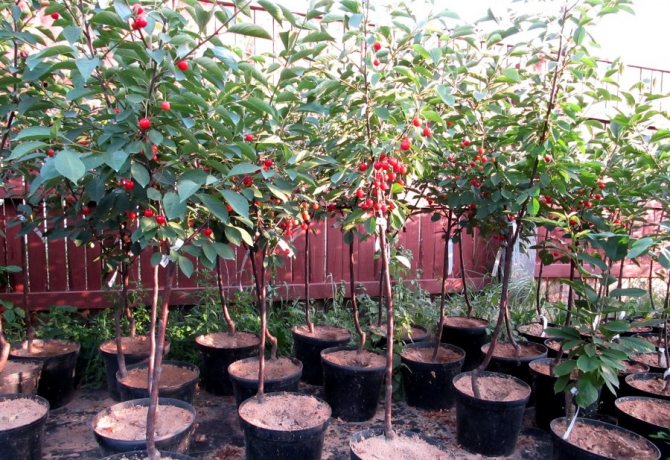

When choosing ready-made trees as planting material, you should pay attention to two-year-old seedlings. The parameters of such plants are as follows:
- 55-60 cm - height;
- 56–60 cm - length of skeletal shoots;
- 2 cm is the diameter of the tree.
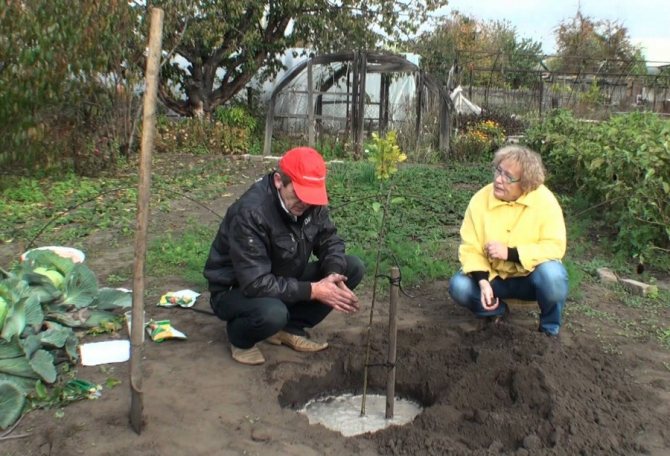

Such seedlings are best suited for autumn planting for wintering. It is recommended to place trees in open ground already in the spring.
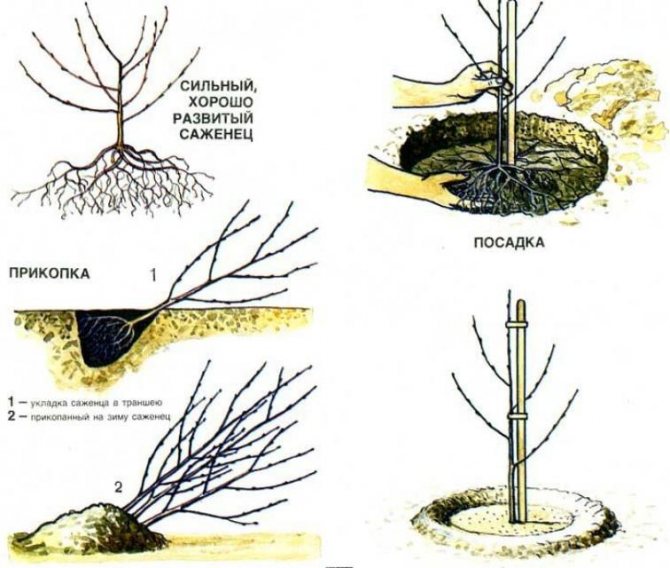

Contraindications and possible harm
The main danger in eating cherries is its seeds. They can provoke poisoning, since they are high in the glycoside amygdalin. This substance is capable of decomposition in the intestines as a result of the action of putrefactive bacteria. In view of this, hydrocyanic acid is formed.
Eating too much cherries is not recommended because it has an increased acidity of stomach juice, suffers from obesity. Contraindications are chronic lung disease, weak intestines.
The main thing is to eat cherries in normal quantities. Then they will give the body only benefit.
The benefits of cherry greens for the body
Young shoots with recently blossoming vegetative mass are considered to be the most valuable medicinally. You can use cherry leaves not only in the warm season, but also in winter. For this, the collected raw materials are dried. Dried greens practically do not differ from fresh ones in their healing qualities.
Cherry leaf tea has a beneficial effect on the entire body.
The benefits of this tea or tea made from cherry branches are as follows:
- Allows you to strengthen the immune system and strengthen the defense.
- It has an anti-inflammatory effect on foci with inflammatory processes in humans.
- Stops bleeding.
- Helps restore water-salt balance.
- Allows you to cleanse yourself of toxic compounds that accumulate in it.
- Removes sand from the kidneys.
- It has a diuretic effect.
- It has a detrimental effect on microflora hostile to the body.
- Able to act as an antioxidant that can slow down the aging process.
- Allows you to relieve fatigue and tone the body.
When preparing teas and decoctions, cherry leaves can be mixed with currant greens to enhance the healing effect. Also, this plant material can be added to compotes made from dried fruits. These combination drinks have a strong health effect.
Most often, cherry teas and infusions are used to restore immunity and replenish the lack of vitamin C. But these pleasant-tasting drinks with an excellent aroma can be used during therapy and prevention of a large number of diseases.
Cherry tea in combination with currant vegetative mass is a very effective remedy:
- in the treatment of colds and flu;
- to stop nosebleeds;
- with the development of hypertension in the patient;
- if a person has tachycardia;
- with anemia
- thrombophlebitis;
- ischemia of the heart;
- gout;
- in the role of an expectorant drug in the development of bronchitis;
- if you suspect the presence of liver disease.
Cherry decoctions are used in gynecology, in case of bleeding. The mildness of the effect on the patient and the almost complete absence of contraindications allows a woman to use drugs based on this raw material even in a state of pregnancy.
Men can use tea with the addition of cherry and currant leaves to restore performance and tone the body after heavy physical exertion.
Landing site: basic site requirements
An important limitation for planting cherries is the tendency of the site to stagnate moisture. The tree is not planted in lowlands, near the location of groundwater, where the soil is prone to rapid waterlogging.
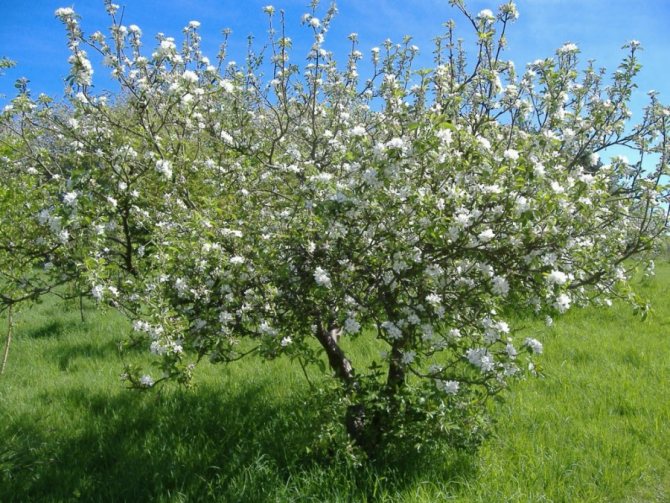

The excessive presence of moisture negatively affects the condition of the roots of the tree. They overheat, rot, and become infected with diseases. The tree dries up, timely cherry blossoms do not come.
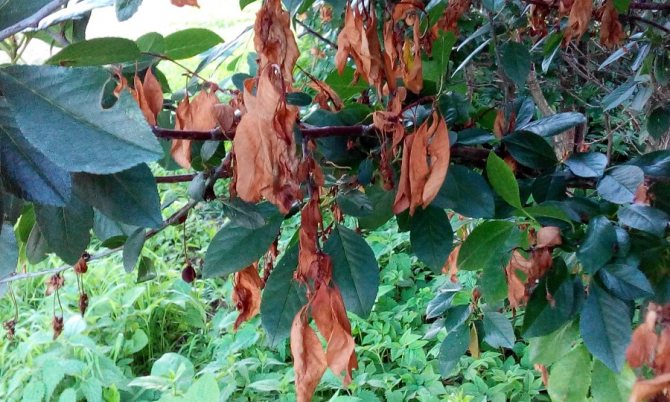

The ideal choice for placing cherries is:
- well-lit areas with southern, western, south-western exposure;
- plain or high ground, sheltered from intense wind;
- sandy, loamy soil with good drainage;
- lack of excessive acidity of the soil.
If the acidity characteristic is increased, then liming will help. After this procedure, it is recommended to saturate the soil with compost or fertilize with mullein. Then, the site is dug up.
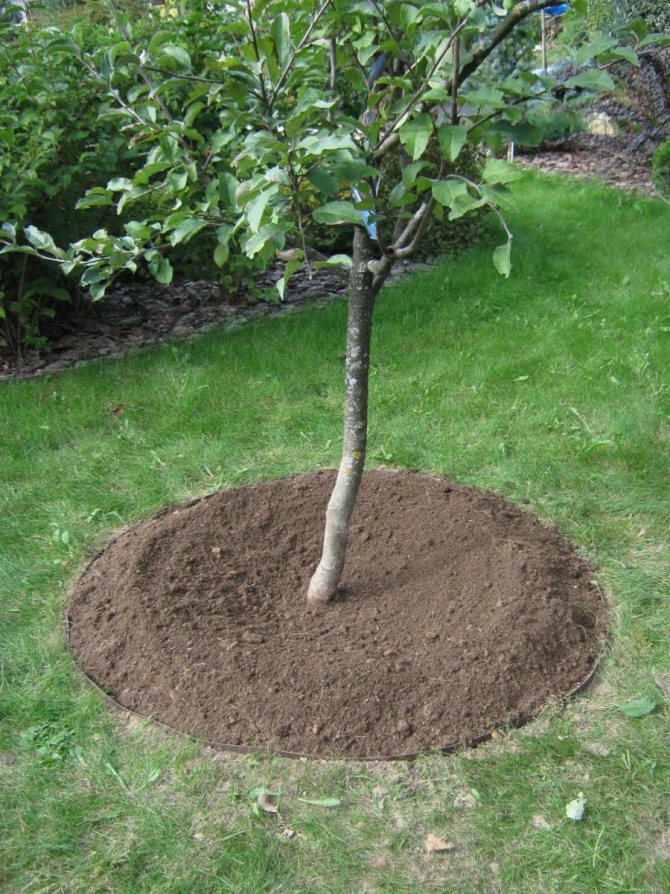

Tree pruning


Cherry pruning, like all trees, occurs during dormancy. This is the end of winter or the beginning of spring. This process is tied to the weather conditions in the cherry growing region. When pruning trees, dry, weak and diseased branches are removed, and the cuts are processed. It is also possible to remove large main branches with a file if a disease is found. This way the whole tree can be saved by deleting the bad branch.

